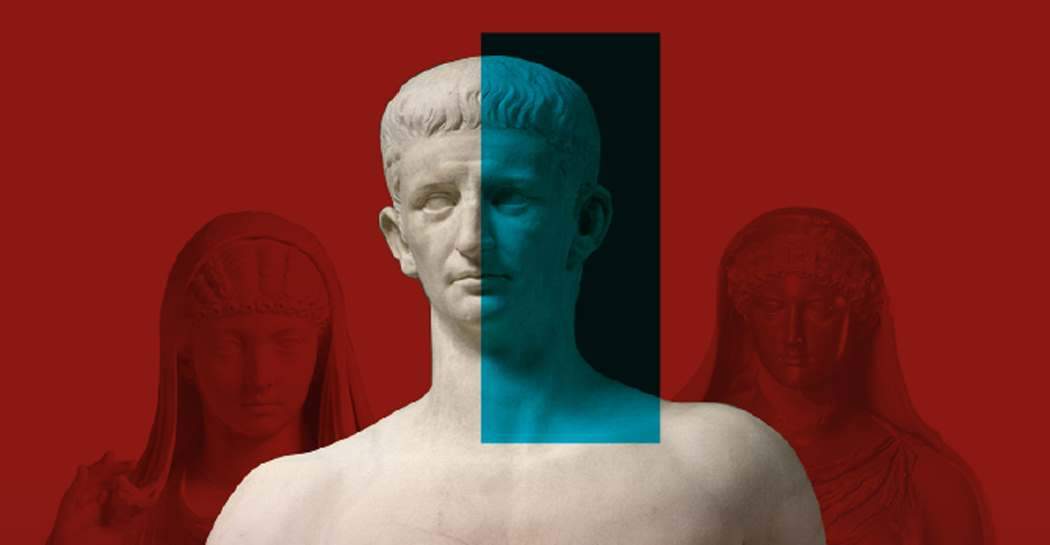Rome, Emperor Claudius stars in exhibition at Ara Pacis Museum
The Ara Pacis Museum hosts, from April 6 to October 27, 2019, the exhibition Claudius Emperor. Messalina, Agrippina and the Shadows of a Dynasty promoted by Roma Capitale, Assessorato alla Crescita culturale - Sovrintendenza Capitolina ai Beni Culturali and Ville de Lyon, curated by Claudio Parisi Presicce and Lucia Spagnuolo, with the collaboration of Orietta Rossini, conceived by the Musée des Beaux-Arts de Lyon, which hosted the French branch of the exhibition that ended last March 4, based on a curatorial project by Geneviève Galliano and Francois Chausson. Organization by Zètema Progetto Cultura.
The exhibition will guide visitors to discover the life and reign of the controversial Roman emperor, from his birth in Lyon in 10 B.C. to his death in Rome in 54 A.D, highlighting his personality, political and administrative work, his connection with the figure of Augustus and his famous brother Germanicus, and his tragic relationship with his wives Messalina and Agrippina, against the backdrop of the Roman imperial court and the controversial events of the Julio-Claudian dynasty. Claudius ’ existence is marked by a singular destiny, confronting him with exceptional events, bloody events, court intrigue, and bold political choices.
The first emperor to be born outside Italic territory, in Lugdunum, present-day Lyon, on August 1, 10 B.C., he was an unlikely candidate to command the empire. Augustus, who doubted his political aptitude, would have much preferred him to his brother Germanicus, who nevertheless died prematurely under suspicious circumstances. As successor, the people and the army had then chosen Caligula, who was Germanicus’ son, heir to his father’s fame. But Caligula’s assassination, stabbed in his own palace, necessarily placed Claudius at the center of the subsequent political crisis. Tiberius Claudius Caesar Augustus Germanicus thus became, at the remarkable age of fifty, the first emperor acclaimed, after a long political-economic negotiation, by a military body, the Praetorians. Claudius’ relations with his four wives are also marked by conspiracies and tragic events. His third wife, Messalina, younger than Claudius by 35 years, remains notorious for her many vices, real or alleged, although she was the mother of Britannicus, the first male heir of the Julio-Claudian dynasty born to a reigning emperor. Having killed Messalina, with Claudius’ consent, Britannicus’ fate was also sealed: he never achieved power, a teenage victim of his half-brother Nero. Claudius’ last marriage, that to his niece Agrippina, would be fatal to him. Agrippina, daughter of Germanicus and sister of Caligula, is considered the architect of his death, possibly by poisoning. Claudius’ death was followed by his deification, the construction of a temple dedicated to him on the Caelian, and the succession in the empire of Agrippina’s son Nero.
The exhibition at the Ara Pacis Museum, supported by the up-to-date work of historians and archaeologists, aims to trace an image of Claudius different from the gloomy and unflattering one conveyed by ancient authors. Claudius is thus presented as an emperor capable of caring for his people, promoting useful economic reforms and great public works, and contributing his legislation to the administrative development of the Empire. The narrative of Claudius’s life and works, rendered through an original setting made up of visual and sound images and suggestions, constitutes the salient feature of the exhibition itinerary, and the characters in the narrative will also be the protagonists of installations that will contribute to making the visiting experience engaging.
A number of works of extraordinary historical and archaeological interest will be on display: from the Tabula Claudiana, on which is imprinted the famous speech given by Claudius in the Senate in AD 48. on the opening to Gaulish notables of the senatorial assembly, to the precious cameo with a portrait of Claudius Emperor from the Kunsthistorisches Museum, to the small but striking gilded bronze portrait of Agrippina Minor, from Alba Fucens and on loan from the Soprintendenza Archeologia, Belle Arti e Paesaggio dell’Abruzzo, which testifies to Claudius’ interest in the territory of the then Regio IV, where he carried out the Fucino enterprise. One of the new features of the exhibition is the display, for the first time, of the Sorgente Group Foundation’s portrait of Germanicus, an important work celebrating the young and beloved prince struck down by an adverse fate.
The exhibition set up at the Ara Pacis Museum boasts important international loans (Musée du Louvre, Lugdunum Musée et Théâtres Romains, Musée des Beaux-Arts de Lyon, Vatican Museums, Ecole nationale Supérieure des Beaux-Arts in Paris, Kunsthistorisches Museum in Vienna, The British Museum, Colchester & Ipswich Museums) and national (Museo Archeologico Nazionale in Naples, Gallerie degli Uffizi in Florence, Museo Nazionale Romano, Museo Archeologico e d’Art of the Maremma, Soprintendenza Archeologia, Belle Arti e Paesaggio dell’Abruzzo, Museo civico archeologico ’Antonio di Nino’, Fondazione Sorgente Group and Galleria Vincent) while making use of works from the Sistema Musei Civici (Musei Capitolini, Centrale Montemartini, Antiquarium Celio, Museo della Civiltà Romana, Museo di Roma) in some cases restored or re-exhibited for the occasion. For all information you can call 060608 (daily from 9 a.m. to 7 p.m.) or visit the museum’s official website.
Source: press release
 |
| Rome, Emperor Claudius stars in exhibition at Ara Pacis Museum |
Warning: the translation into English of the original Italian article was created using automatic tools. We undertake to review all articles, but we do not guarantee the total absence of inaccuracies in the translation due to the program. You can find the original by clicking on the ITA button. If you find any mistake,please contact us.





























